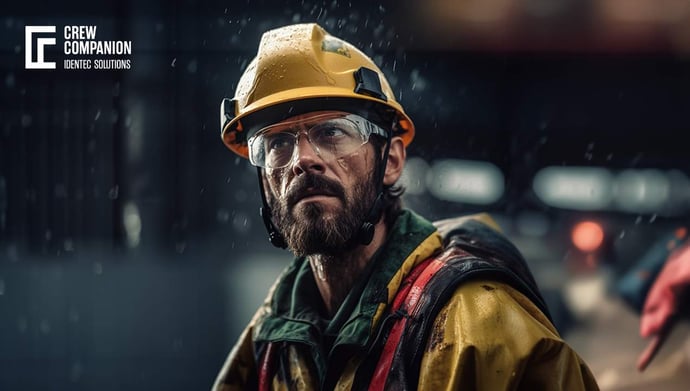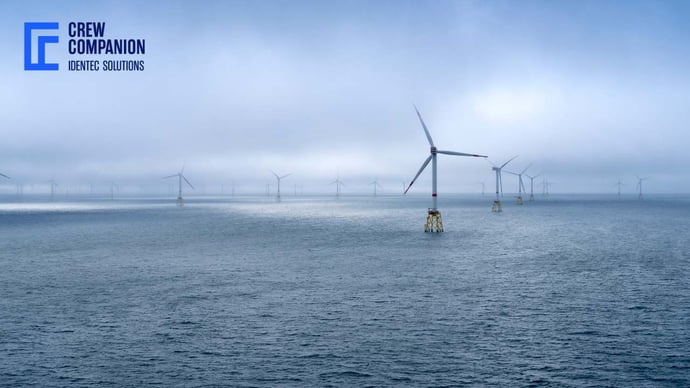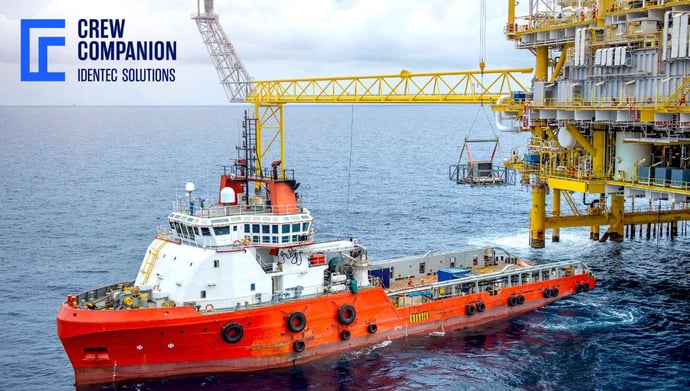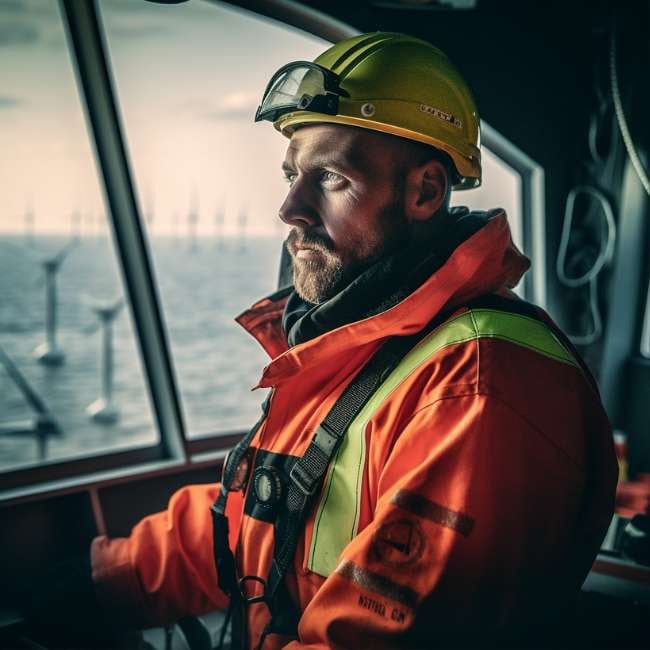Emergency Response time offshore
| Written by Michal Wozniakowski-Zehenter
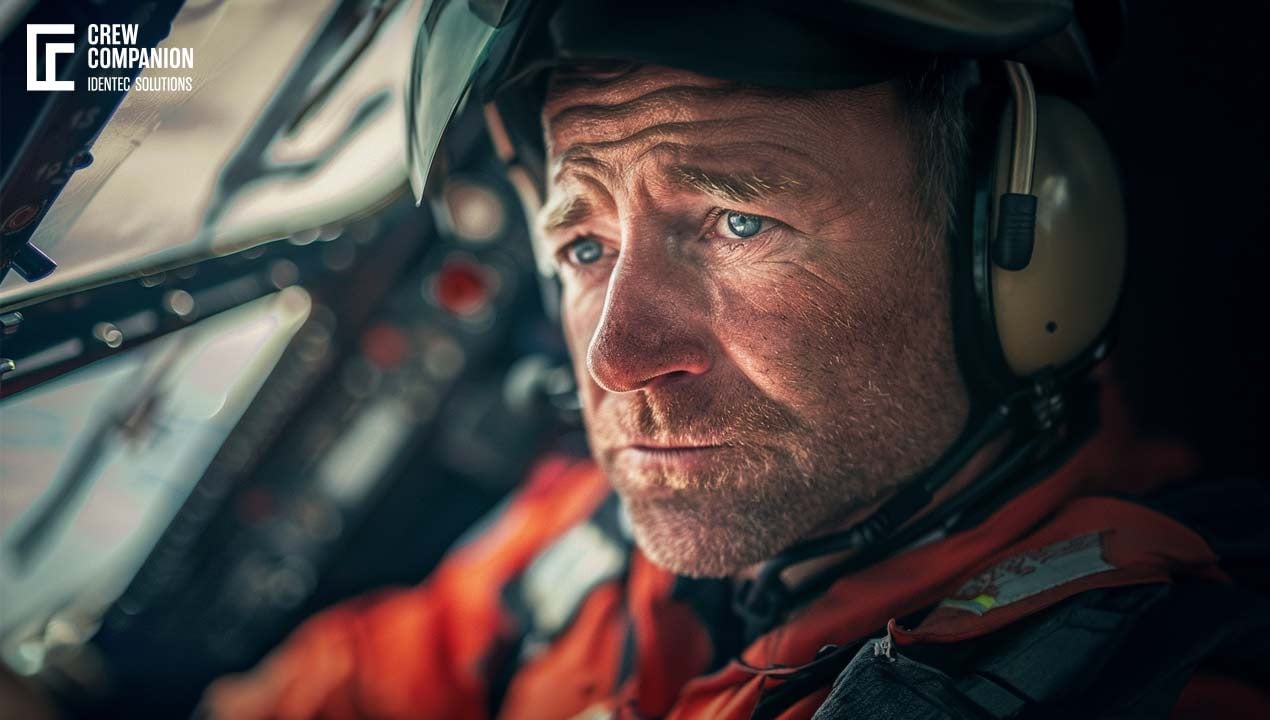
No video selected
Select a video type in the sidebar.
EMERGENCY RESPONSE TIME: GOLDEN HOUR
There were 225 incidents recorded in 2022 but no fatalities, according to the OEUK Report. Among the most common injuries are hand injuries, but they also happen when you have strokes, heart attacks, and asthma attacks, as well as broken bones, fractures, lifting injuries, and teeth knocked out due to non-accidental medical emergencies.
There have been no fatalities on UK offshore wind farms despite all of these accidents. It's partly because of offshore paramedics, who get to medical emergencies at a moment's notice, making sure the accident doesn't get worse. But with teams often based on land, how do paramedics handle the critical time pressures when responding to offshore accidents? During the 'golden hour,' which is the brief period when aid is critical, they train so that lives can be saved offshore. Medical professionals call it the 'golden hour' or 'golden time', the period after a traumatic injury when it is most likely that prompt medical treatment will prevent death. That’s why emergency response time is so crucial (read also more about emergency mustering).
Having trained medics on site could save lives, with offshore sites now being far enough from shore to be outside this 'golden hour' for evacuation to shore-side medical facilities. It's also possible for crew transfer vessels (CTV) or helicopters to get hampered or delayed in Northern Europe due to weather conditions.
When there's an accident, experienced on-site medics can take care of everyone right away with an immediate, professional response and have drugs and trauma equipment ready. The availability of this service at sea helps resolve medical issues early before they impact loss time statistics or cause the patient to be evacuated (read more about how to prepare for an EHS audit).
THE DOMINO EFFECT
There's always one problem that starts everything, whether it's a scratch or caught equipment. On the oil rigs, people need to deal with and make the best out of limited supplies. A problem that seems manageable can spiral insanely fast without quick support. If something goes wrong, the whole rig gets all messed up, and if it's ignored, it can worsen to the point that someone has to get off the rig. Equipment making mistakes can cause serious harm, and people can get injured. If something on the rig goes bad, they'll have to stop producing oil, which can be very expensive. A fire needs fast action, too. Otherwise, it will gain strength and make rescuing even harder and scarier. Moreover, workers and rescue teams could get hurt if an urgent situation drags out.
The ocean's ecosystem for fish and plants can be destroyed if oil leaks don't get contained immediately. Everyone needs to act fast to stop a huge calamity and save marine life. If help is slow, the oil companies suffer a huge cash and reputation blow. More accidents pile up the costs and interrupt income streams. Having bad emergency management can make the public think the companies aren't good, resulting in harsher rules. To avoid the ripple effect of chaos, everyone has to respond quickly and stay sharp when the going gets tough. When trouble hits offshore, rescue ships with high-tech gear and skilled teams can handle it awesomely. Having them around before trouble hits makes offshore problems less likely to become catastrophes. This keeps not only the workers and the sea safe--but also the drilling operation and their profits.

FACTORS AFFECTING EMERGENCY RESPONSE TIME
There are a lot of factors that influence emergency response effectiveness, like weather and environmental factors (see also: emergency response technologies). During high seas, strong winds, and poor visibility, boat and helicopter operations can be hard, so you need to plan and find other ways to respond. When preparing for an emergency, it's important to know what SOVs and helicopters can do based on the environment. SOVs can find and reach incident sites faster if they're outfitted with advanced navigation and communication systems. A SOV's availability of medical facilities and rescue equipment, as well as the ability to airlift patients or deliver equipment via helicopter, greatly affect response times.
For an emergency to go smoothly, crew training and readiness are crucial (continue reading about crew attendance). During emergencies, both SOV crews and helicopter pilots need to practice drills and be familiar with emergency protocols. For rapid deployment, SOVs and helicopters also need clear chains of command and streamlined decision-making processes. To go as smoothly as possible, compliance with maritime and aviation regulations is essential for emergency response efforts. Compliance with maritime and aviation regulations affects how quickly emergency resources are mobilized. Coordination between SOVs, helicopters, and onshore emergency services is critical for optimizing resource utilization and minimizing response times.
FINANCIAL LOSSES AND DOWNTIMES
The economic consequences of emergencies in offshore operations extend far beyond the immediate costs of response and recovery. These incidents can have a domino effect (again!), impacting the financial stability of the organizations involved, the broader economy, and the global energy market. A swift and efficient emergency response is not just a matter of mitigating hazards; it's a critical investment in the economic resilience and sustainability of offshore operations.
An offshore emergency's most immediate economic impact is the direct cost associated with addressing the incident. This includes expenses related to emergency response operations, medical treatments, repairs to damaged infrastructure, and clean-up efforts for environmental contaminations. For instance, a significant oil spill requires extensive clean-up operations involving specialized equipment and personnel, the costs of which can escalate rapidly. Similarly, a fire or structural failure on an offshore platform necessitates immediate repair to prevent further damage and restore operational capacity, incurring substantial expenses for labour, materials, and equipment.
Emergency incidents offshore also have implications for insurance and liability costs. Companies face increased premiums following incidents, especially if investigations reveal deficiencies in safety protocols or emergency preparedness. Additionally, there may be substantial legal liabilities, particularly if there are injuries, fatalities, or significant environmental damage. These costs can be mitigated through effective emergency response strategies that minimize the impact and severity of incidents, demonstrating due diligence and a commitment to safety and environmental stewardship.
Innovations to Accelerate Emergency Response Time
Technological improvements have been the mainstay for advancing superior capabilities and enhancing the effectiveness and speed of emergency responses for SOVs. The advanced SOVs have modern equipment, including autonomous navigation systems, advanced communication equipment, and integrated facilities for medical purposes. These are not luxuries but key assets in transforming emergency response by shrinking reaction times and enhancing efficiency. Indeed, SOVs remain connected with the onshore command centres through the employment of real-time data sharing and satellite communication for a well-coordinated and up-to-date intelligence-driven response. This is very important, especially when conventional lines of communication go down or are unreliable due to adverse weather conditions.
Using drones and unmanned aerial vehicles has been an additional key development. Such agile devices are rapidly deployed to visually assess the emergency situation ahead of any crew members' arrival at the site, thus providing information in terms of visual and environmental assessment to inform a response strategy. Indeed, drones or UAVs equipped with thermal imaging and high-resolution cameras are especially valuable in pinpointing the location of people in distress, even under poor-visibility conditions, accelerating search and rescue operations and limiting risks to human responders.
Just as revolutionary is the use of remotely operated, semi-autonomous submersibles during underwater emergencies. These submersibles would be able to travel through treacherous underwater landscapes, inspect damage, or even perform light repair work in areas of high risk for human divers. Medical emergencies, in turn, see the godsend of telemedicine. In cases of medical diagnosis, offshore medics can confer with onshore specialists in real time through high-speed satellite Internet and treat patients without being physically close to full medical facilities.
As the challenges evolve in offshore operations, continuous development and deployment of innovative life-saving appliances, emergency response technology, and training will be required. The trend toward site remoteness and complexity demands a step change in these advanced tools if safety standards, protection of life, and operational continuity are to be maintained.
FAQS
What is Offshore Emergency Response Time?
Offshore Emergency Response Time is the total time it takes to respond to an emergency on an offshore installation, like an oil rig or a wind farm. This includes everything from the moment an emergency is detected and reported, gathering and sending out emergency teams, the journey those teams take to get to the incident, and finally starting the needed help or intervention.
It's crucial to respond quickly to emergencies in the offshore world, where installations can be far from land and exposed to harsh conditions. Emergency teams, like those on SOVs or helicopters, need to be well-prepared and quick to react and get to the scene of an incident if they want to be efficient. Our goal is to minimize the risks and harms of offshore emergencies by getting help as fast as we can (learn more about EHS Risk Management).
What are the five levels of emergency response?
Prevention focuses on preventing human hazards, primarily from potential natural disasters or terrorist (both physical and biological) attacks. Preventive measures are designed to provide more permanent protection from disasters; however, not all disasters can be prevented. Good evacuation plans, environmental planning, and design standards can limit the risk of loss of life and injury.
Preparedness is a continuous cycle of planning, organizing, training, equipping, exercising, evaluating, and taking corrective action. Training and exercise plans are the cornerstone of preparedness, which focuses on readiness to respond to all-hazards incidents and emergencies.
Response is comprised of the coordination and management of resources (including personnel, equipment, and supplies) utilizing the Incident Command System in an all-hazards approach; and measures taken for life/property/environmental safety. The response phase is a reaction to the occurrence of a catastrophic disaster or emergency.
Recovery consists of activities that continue beyond the emergency period to restore critical community functions and begin managing stabilization efforts. The recovery phase begins immediately after the threat to human life has subsided. The goal of the recovery phase is to bring the affected area back to some degree of normalcy.
Mitigation is the effort to reduce loss of life and property by lessening the impact of disasters and emergencies. Mitigation involves structural and non-structural measures taken to limit the impact of disasters and emergencies.
TAKEAWAY
Keeping people safe, protecting the environment, and maintaining economic stability require quick emergency response times in offshore operations. During emergencies, Service Operations Vessels are the first line of "defence", providing immediate assistance. The importance of SOVs and quick emergency response grows bigger as offshore activities get more remote and difficult to reach. Innovation and investment in these essential maritime assets are important. Keeping the crew safe was, is and will be one of the top priorities.
Delve deeper into one of our core topics: Personnel on board
Sources:
(2) https://www.offshorewind.biz/2018/06/29/the-medical-challenges-of-offshore-operations/
Note: This article was updated on the 5th of November 2024

Author
Michal Wozniakowski-Zehenter, Marketing Manager
Michal Wozniakowski-Zehenter is an experienced marketing and project management professional. He spent most of his career on projects with a strong focus on digital marketing and event management. He is a very active voice representing offshore and mining industries through social media channels. Michal writes mainly about offshore oil and gas, renewable energy, mining and tunnelling. Compiling and sharing the knowledge within industries is one of his goals.

